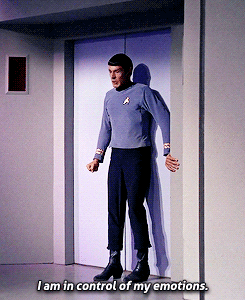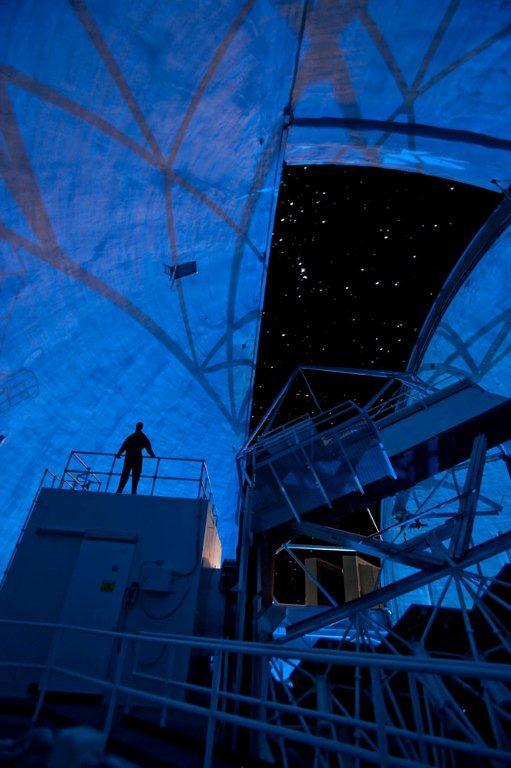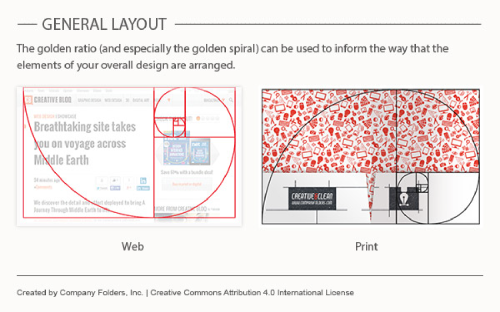For The First Time, Scientists Have Discovered A Classic Formula For Pi In The World Of Quantum Physics.

For the first time, scientists have discovered a classic formula for pi in the world of quantum physics. Pi is the ratio between a circle’s circumference and its diameter, and is incredibly important in pure mathematics, but now scientists have also found it “lurking” in the world of physics, when using quantum mechanics to compare the energy levels of a hydrogen atom.
Why is that exciting? Well, it reveals an incredibly special and previously unknown connection between quantum physics and maths.
“I find it fascinating that a purely mathematical formula from the 17th century characterises a physical system that was discovered 300 years later,” said one of the lead researchers, Tamar Friedmann, a mathematician at the University of Rochester in the US. Seriously, wow.
The discovery was made when Carl Hagen, a particle physicist at the University of Rochester, was teaching a class on quantum mechanics and explaining to his students how to use a quantum mechanical technique known as the ‘variation principle’ to approximate the energy states of a hydrogen atom.
While comparing these values to conventional calculations, he noticed an unusual trend in the ratios. He asked Friedmann to help him work out this trend, and they quickly realised that it was actually a manifestation of the Wallis formula for pi – the first time it had even been derived from physics.
“We weren’t looking for the Wallis formula for pi. It just fell into our laps,” said Hagen. “It was a complete surprise,” added Friedmann. “I jumped up and down when we got the Wallis formula out of equations for the hydrogen atom.”
Since 1655 there have been plenty of proofs of Wallis’s formula, but all have come from the world of mathematics, and the new results have people freaking out. The results have been published in the Journal of Mathematical Physics.
Continue Reading.
More Posts from Vanderwaalrus and Others
I really just want someone who’s in the same shoes as me to tell me it’s okay. I mean. All my friends are smart and yeah, they say stuff like “you’re not dumb!!” But im just thinking “well im not smart either”



Looking at the stars from the inside of one of the Keck domes, at Mauna Kea.

http://smbc-comics.com/comic/rocks
I had some really nice asks about math encouragement, and so I wanted to share some things from my responses:
Since I was never a math person before my mid-twenties, I had a TON of catching up to do to get my mathematics degree. This meant I couldn’t afford to compare myself to my classmates, because I was so hilariously behind that I had to accept (and even embrace) being dead last in the ranking. I had to acknowledge that as a necessary pre-requisite to attempting a mathematics degree, and I truly believe that attitude is one of the main reasons I was able to complete that degree. Because of this attitude, I was kind to myself. I applauded myself for just being able to be in each room, enrolled in each class, because it was so improbable that a former math illiterate could have gotten there in the first place. I still endeavor to celebrate every victory from ‘Yay! You showed up with your shoes tied and everything’ to ‘Look at you go! You took that really hard test and got a WHOLE THIRD of the points! That so much more than none of the points!’ That mindset kept me going, kept me from being competitive with my colleagues, and kept me feeling fulfilled and proud of my work. I never was a modern-day Gauss, but that’s fine with me. I don’t do math to glorify myself. I do math because it is important, because I love it more than I have ever loved anything. I study mathematics because the only thing I need in this life is to know more about mathematics today than I did yesterday.
my first post..
and I should be writing an essay. seems about right

LHC Breakthrough Unveils Key Facts about the Fundamental Symmetry of Nature
These measurements may help physicists determine which theory of the Fundamental Laws of the universe is most plausible… http://bit.ly/1G0Eiic
The Hubble Space Telescope Turns 25!

Hubble scientists released this image of the star cluster Westerlund 2 to celebrate the telescope’s anniversary. ©NASA/ESA
Friday, April 24 marks the 25thanniversary of the Hubble Space Telescope. In its quarter-century of operation, Hubble has broadened our understanding of the cosmos like no instrument before it. To mark the occasion, we spoke with Department of Astrophysics Curator Dr. Michael Shara who worked with the Hubble mission during his time at the Space Telescope Science Institute. Dr. Shara and his collaborators have logged over 1000 hours using the telescope for their work on star clusters, novae and supernovae.

Department of Astrophysics Curator Dr. Michael Shara. AMNH/D.Finnin
What did your work with the Hubble Space Telescope entail?
I joined the Space Telescope Science Institute (STSI) in 1982, eight years before the launch of Hubble. I was the project manager for the Guide Star Catalog that is used to target and calibrate the Hubble, and a few years after the telescope was launched, I was responsible for overseeing the peer review committees, which looked over proposals from researchers who wanted to use the telescope.
What was that experience like?
It was amazing to be able to see things coming in astronomy years before they were published. Reading hundreds of proposals and sitting in on deliberations about them was spectacular to watch.
How does it feel to look back on the launch of Hubble, twenty-five years out?
This anniversary is a joyous thing. Watching the deployment of Hubble in 1990 was an amazing, heart-stopping experience.

The so-called Pillars of Creation are one of the most iconic images Hubble has captured. ©NASA/ESA
Hubble’s mission didn’t start out exactly as planned, though, did it?
The first three years were bumpy. When word came back that spherical aberration was preventing Hubble from focusing properly, I think everyone working on the project had the same terrible feeling in the pit of their stomachs. The mission to repair it in 1993 was even more tense than the initial launch, but it was wildly successful, and for the last 22 years, the story of Hubble has been one triumph after another.
What are some things that stand out in Hubble’s history?
It’s hard to pick one, because Hubble has just been a discovery machine. It’s the most productive telescope in history, with thousands of refereed papers published using Hubble data so far. One that stands out is the discovery of dark energy by groups using the Hubble. That was a totally unexpected discovery that essentially lobbed a hand grenade into the world of modern physics.
We also learned much about our own solar system. For example, we saw a comet smash into Jupiter, which helped us understand how frequently these events occur, and what an important role they have played in the development of our solar system.
What makes Hubble such a “discovery machine?”
Part of it is the Hubble Archives. Every image, every spectrum, and every measurement that Hubble takes is stored by STSI. That data is proprietary to the researchers who first gathered it for one year. After that period, the information is free and open to other researchers, as well as the general public. That means there are many astronomers using data in ways the people who gathered it could not have foreseen, like using images that looked for a phenomenon known as microlensing in galaxies to find large populations of novae in those same galaxies.

Jupiter’s moon, Io, passes in front of the gas giant, casting a shadow on its surface. ©NASA/ESA
How has this telescope changed since it was first deployed?
Every few years, Hubble has been upgraded, so it is a much more capable instrument today than when it was launched. The cameras are much more sensitive now, and the infrared and ultraviolet capabilities are vastly better than those available just a few years ago.
After 25 years, how much life does Hubble have left?
Well, the instruments, computers, and gyroscopes on Hubble are doing really well. It’s conceivable that it will be useful until 2021 or 2022. After that, because we don’t have a shuttle program to boost it into a higher orbit, Hubble’s orbit will decay to the point where it finally falls to Earth. But the body of data that Hubble has collected is unmatched, and that information will be put to use for decades to come, and maybe even a century from now.
-
 im-just-trash-ok-mom liked this · 4 years ago
im-just-trash-ok-mom liked this · 4 years ago -
 noirpunk101 liked this · 5 years ago
noirpunk101 liked this · 5 years ago -
 lockslayer liked this · 6 years ago
lockslayer liked this · 6 years ago -
 maps-and-elvis-and-zelda-n-shit reblogged this · 7 years ago
maps-and-elvis-and-zelda-n-shit reblogged this · 7 years ago -
 maps-and-elvis-and-zelda-n-shit liked this · 7 years ago
maps-and-elvis-and-zelda-n-shit liked this · 7 years ago -
 panzerpaladin-blog liked this · 7 years ago
panzerpaladin-blog liked this · 7 years ago -
 pephatesthisbut-archivalpurposes liked this · 7 years ago
pephatesthisbut-archivalpurposes liked this · 7 years ago -
 maeve69 liked this · 7 years ago
maeve69 liked this · 7 years ago -
 bachatanero liked this · 7 years ago
bachatanero liked this · 7 years ago -
 nobeerreviews liked this · 7 years ago
nobeerreviews liked this · 7 years ago -
 littlest-rascal reblogged this · 7 years ago
littlest-rascal reblogged this · 7 years ago -
 santessero liked this · 8 years ago
santessero liked this · 8 years ago -
 homosnapien reblogged this · 8 years ago
homosnapien reblogged this · 8 years ago -
 homosnapien liked this · 8 years ago
homosnapien liked this · 8 years ago -
 0polymer0-blog liked this · 8 years ago
0polymer0-blog liked this · 8 years ago -
 my-elles-blog liked this · 8 years ago
my-elles-blog liked this · 8 years ago -
 primordialfather liked this · 8 years ago
primordialfather liked this · 8 years ago -
 wondering-slave reblogged this · 8 years ago
wondering-slave reblogged this · 8 years ago -
 blacker-thanthewhiteofthesn-blog liked this · 8 years ago
blacker-thanthewhiteofthesn-blog liked this · 8 years ago -
 thatawkwardphysicist reblogged this · 8 years ago
thatawkwardphysicist reblogged this · 8 years ago -
 marvelouslymediocr-blog liked this · 8 years ago
marvelouslymediocr-blog liked this · 8 years ago -
 stairwell-flowers liked this · 8 years ago
stairwell-flowers liked this · 8 years ago -
 beardmansshaggyscruff liked this · 8 years ago
beardmansshaggyscruff liked this · 8 years ago -
 bhuvaneshwariarun liked this · 8 years ago
bhuvaneshwariarun liked this · 8 years ago -
 hikikomorikatti liked this · 8 years ago
hikikomorikatti liked this · 8 years ago -
 entropyfindsall liked this · 8 years ago
entropyfindsall liked this · 8 years ago -
 mjn1123 liked this · 8 years ago
mjn1123 liked this · 8 years ago -
 media-stuff reblogged this · 8 years ago
media-stuff reblogged this · 8 years ago -
 weapon-of-maths-destruction reblogged this · 8 years ago
weapon-of-maths-destruction reblogged this · 8 years ago -
 theronvanwhy-blog reblogged this · 8 years ago
theronvanwhy-blog reblogged this · 8 years ago -
 mainacc-tipicaltrashfangirl liked this · 8 years ago
mainacc-tipicaltrashfangirl liked this · 8 years ago -
 zumisumi liked this · 8 years ago
zumisumi liked this · 8 years ago -
 notosct reblogged this · 8 years ago
notosct reblogged this · 8 years ago -
 neuro-slut reblogged this · 8 years ago
neuro-slut reblogged this · 8 years ago -
 milo-icecream liked this · 8 years ago
milo-icecream liked this · 8 years ago -
 worclip liked this · 8 years ago
worclip liked this · 8 years ago -
 ice-flashcicle-blog liked this · 8 years ago
ice-flashcicle-blog liked this · 8 years ago -
 gochembox liked this · 8 years ago
gochembox liked this · 8 years ago -
 pure-reblogs-art-tutorials reblogged this · 8 years ago
pure-reblogs-art-tutorials reblogged this · 8 years ago -
 gxnseytheiii liked this · 8 years ago
gxnseytheiii liked this · 8 years ago




